One of the most archaeologically significant and sacred sites in southern Africa, the captivating Tsodilo Hills are adorned by more than 4,500 rock paintings, painted by the San and Bantu peoples over thousands of years.
Lying on the western edge of the Kalahari Desert, you can’t miss the hills, a series of four monumental rocks that dominate the otherwise flat, barren landscape.
A UNESCO World Heritage Site since 2001, archaeologists estimate that Tsodilo has been occupied by humans for some 100,000 years and it’s long been revered by the people who live here.
The San people believe it was the site of the first creation and the spirit of every plant and animal was created at Tsodilo.
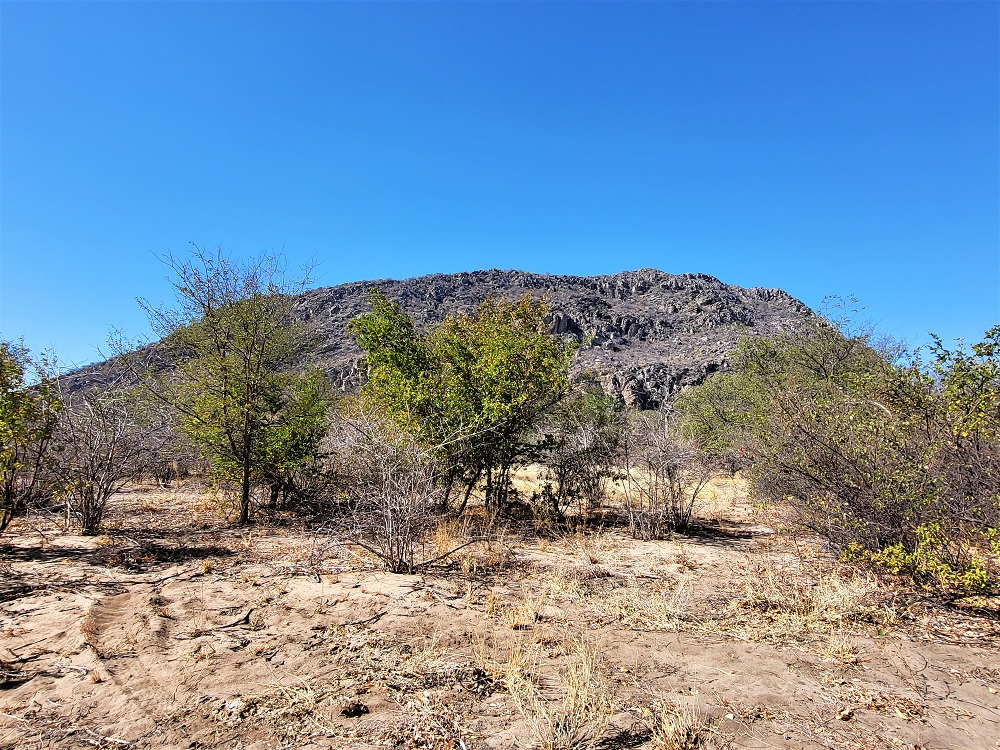
According to legend, the four hills represent a husband (above), a wife (below) and their two children.
Legend has it the wife left her husband, taking their two children with her, but while the older child stayed with its mother, the younger child returned to be with the husband.

Today, the area is inhabited by the !Kung (a San group) and Hambukushu (a Bantu tribe), who are both thought to have settled here in the 19th century.
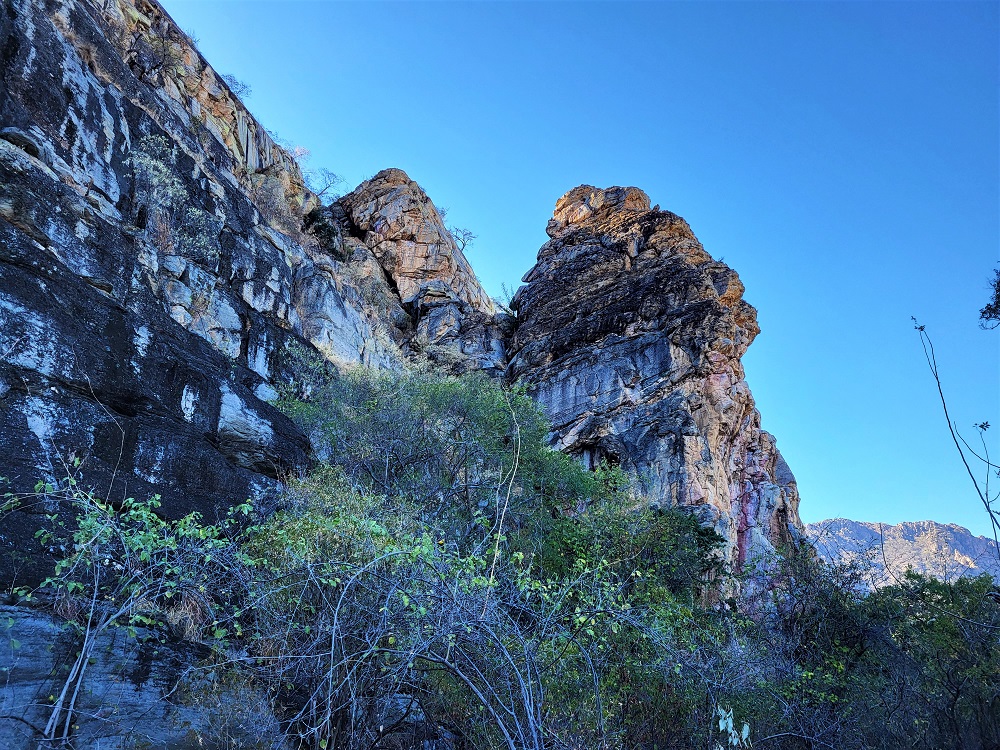
In a bid to boost the local economy, the Botswanan government has mandated that visitors can only tour the Tsodilo Hills if they’re accompanied by a local guide.
We were met in Tsodilo’s car park by our guide for the day Morango, who lives in one of the nearby San villages.
Morango took us on a two-and-a-half our hike around Tsodilo, following one of five walking trails, the Rhino Trail, which takes visitors around and over the Female Hill (above).
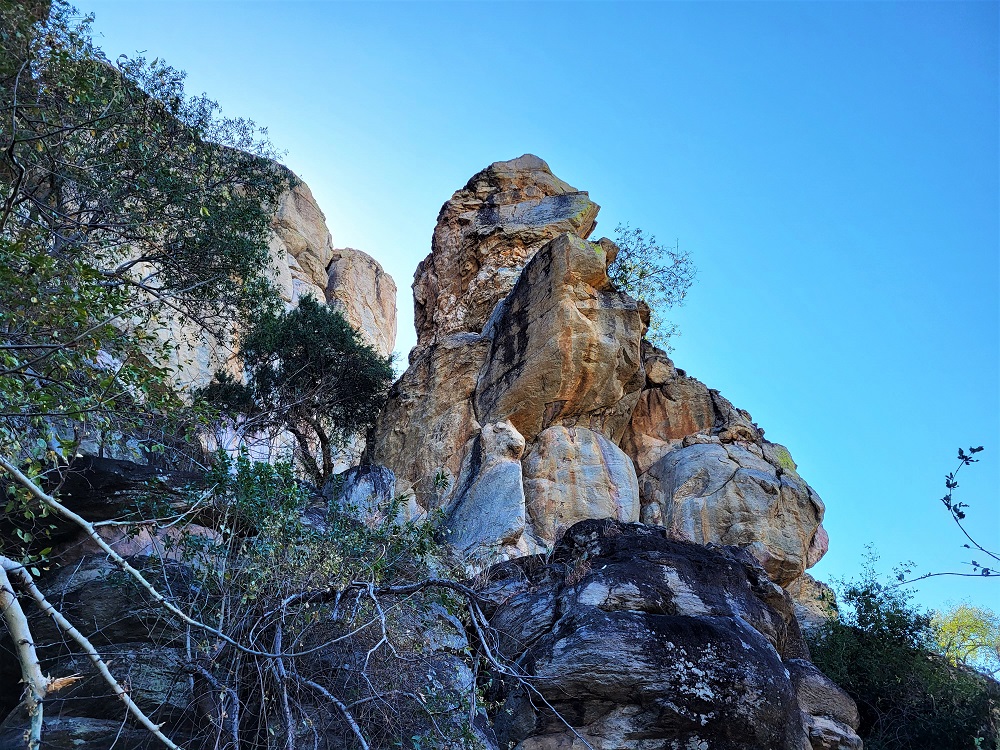
One of the things that most struck me about the hills was the spectacular geology, which reminded me a little of the rock formations at Petra.
The colours in the sandstone were phenomenal – a pretty mix of reds, yellows, pinks, greys, whites and blacks in eye-catching shapes.

As we walked along the trail, we learned there are two types of rock art at Tsodilo – red and white finger paintings.
The red paintings, which make up the majority of the art, were painted by the San people, with some paintings dating back as far as 4,000 years ago.
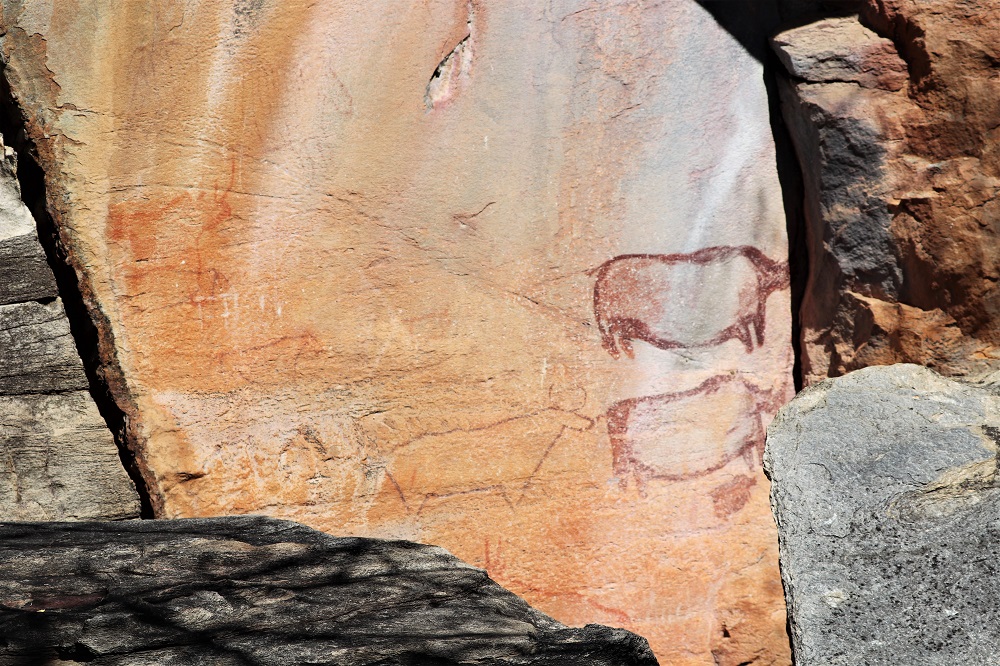
The red paint was made by mixing calcrete, haematite, charcoal, blood, marrow, fat, tree sap and urine.
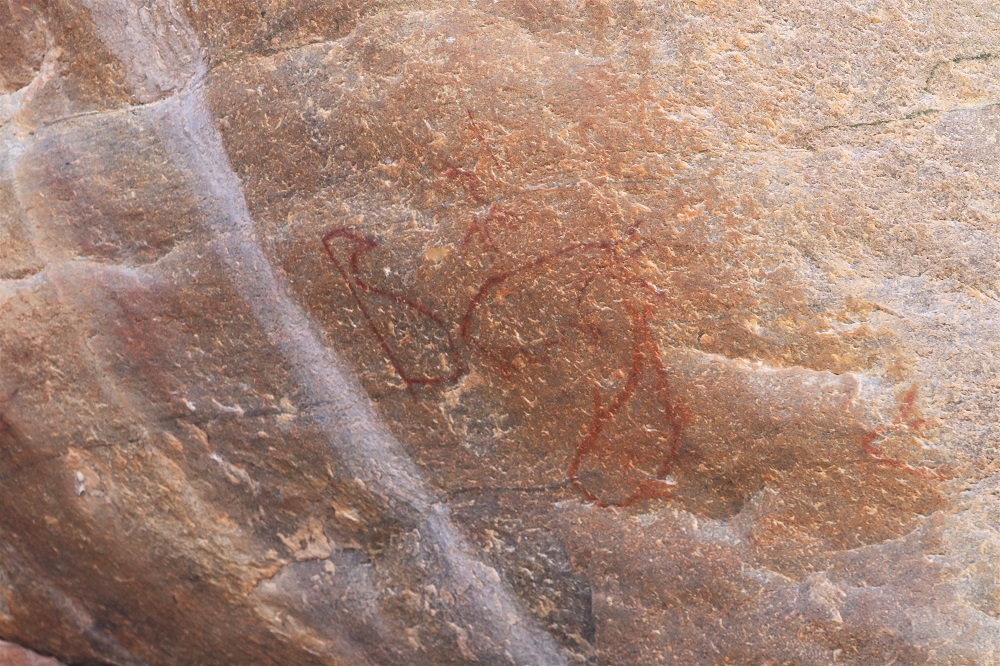
The extraordinary paintings depict animals, people and geometric shapes, and I was surprised to find animals such as whales (above) and penguins among the artworks, as Tsodilo is so far from the sea.
The San are a nomadic people and experts believe the painters must have had links with the Namibian coast to have been able to draw the marine creatures.
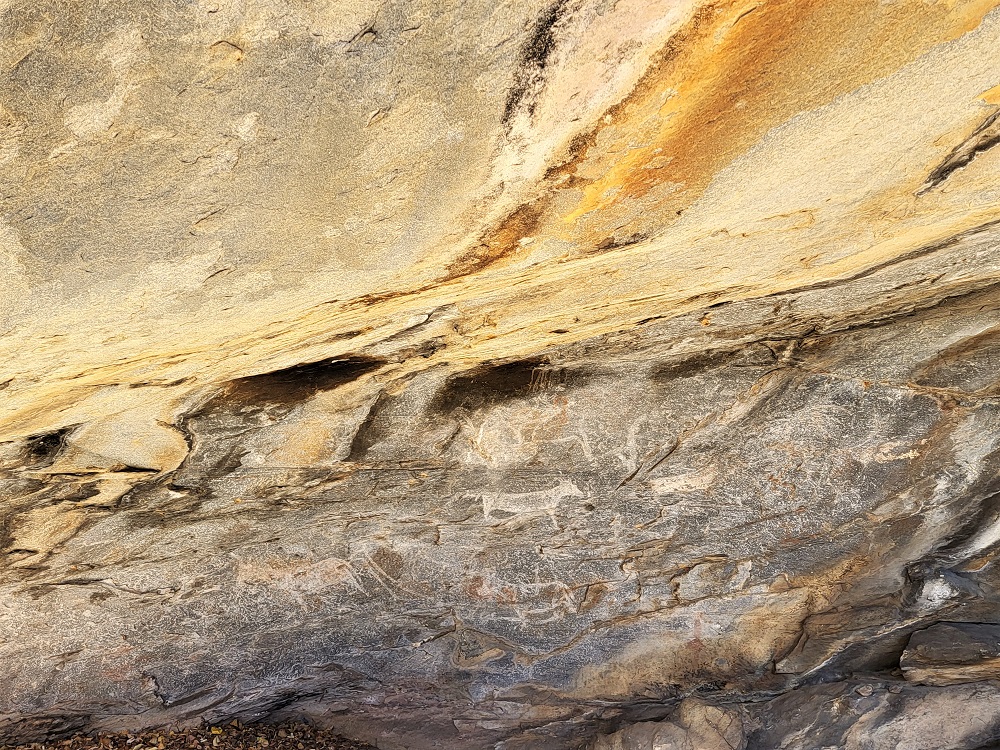
Tsodilo is also home to a series of white paintings created by the Bantu people, which date from as long as 2,000 years ago and feature images of cattle, horses and other domesticated animals (above).

We followed the Rhino Trail as it skirted the edge of the Female Hill, as Morango pointed out various interesting features along the way
We passed a cave and a few rock shelters – in one of which, Morango showed us a cupule, a rock with small round dents carved into it (above).

We also passed some unusual tree species, including a number of baobabs and a mongongo tree (above), which is beloved by elephants for its nuts.
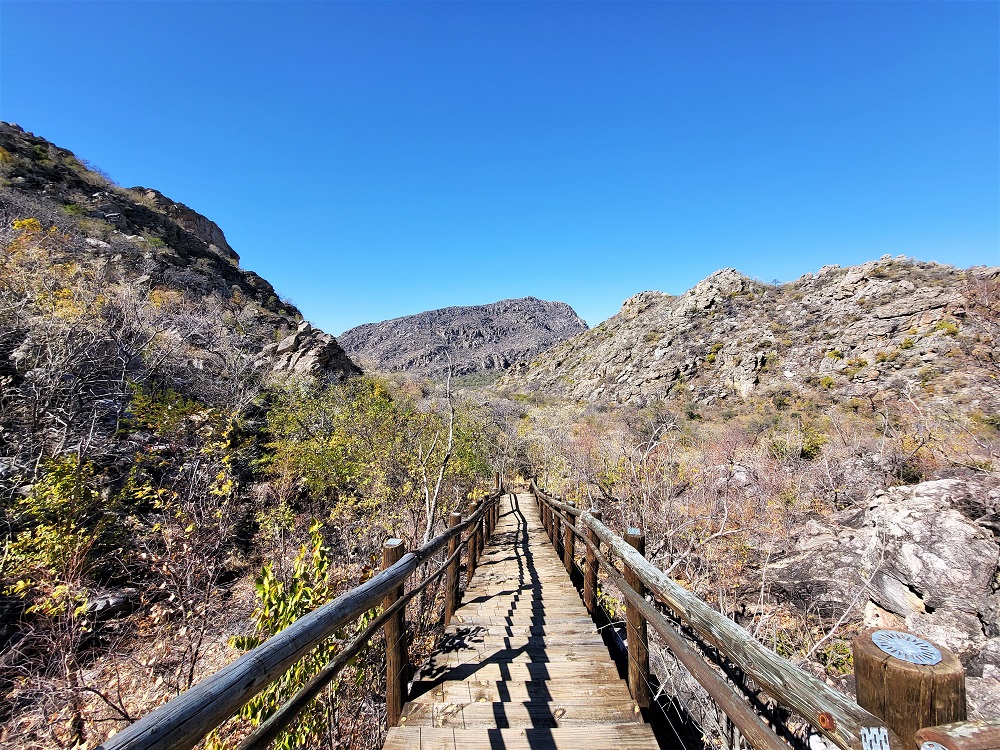
After an hour or so, the trail became steeper and we had to clamber up some large rocks to reach the viewing platform, which looked out over the route we’d just walked (above).
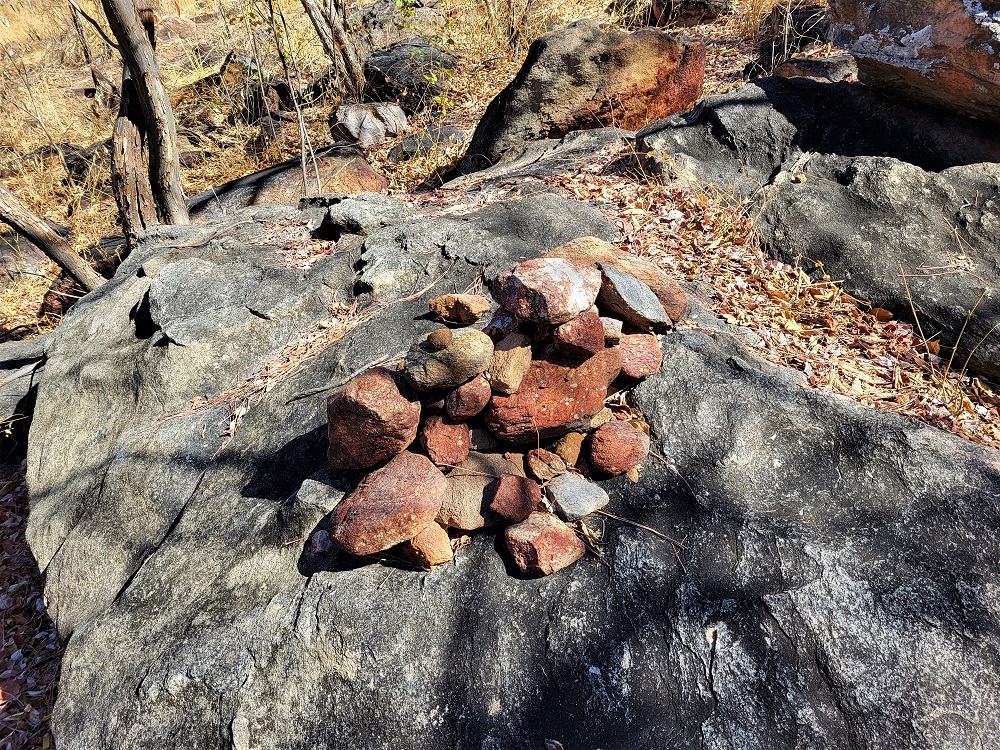
We continued our hike to the top of the hill, stopping part way to find a pretty stone to lay as an offering to our ancestors to make sure we had a safe journey over the hill (above).







